MASSA: Innovation Inside its DNA
From designing the world’s largest transducer; to lobster-like surf crawling robots to detect and destroy mines; to creating a new bowling score system; to designing, building and delivering sonar systems used by the most powerful navy on the planet, Massa Products Corporation represents nearly eight decades of invention and innovation. Dawn Massa Stancavish shares her insights and experience as a female, third generation leader of this innovative sonar and ultrasonic products engineering company.
Following in the footsteps of an invention and engineering pioneer is neither straight nor easy. Following in the footsteps of your grandfather and father, taking the helm of a 77-year-old iconic company in the midst of a global pandemic, as a female leader in a male-dominated business, makes the path a bit more perilous.
But through it all, Dawn Massa Stancavish has fallen back on her broad business acumen, as well as her long-tenured experience in and love of the family business to prepare Massa for another generation of growth.
Massa Products Corporation is self-proclaimed as “the eyes and ears for naval ships and submarines,” founded by Frank Massa, who pioneered the field of electroacoustics. Today Massa engineers and manufactures sonar and ultrasonic products for use in the water and air, selling to commercial, industrial and military markets.
At a glance, Massa is an engineering and invention company to its core. But once you dig deeper, it is far more, with the ability to discuss, design and manufacture products for disparate industries, cradle to grave, all centered on using an electroacoustical solution. Massa designs, develops, and manufactures new and modified products, hundreds of transducers and systems that operate in fluid and gas at different frequencies spanning from 5 Hz to 500 kHz; used in various environments and applications including anti-collision, measurement, liquid level (C1D1 Hazardous and not), flow, anti-theft, web break, bowling scoring systems, active and passive sonars, to name a few.
“When I was younger, I had a conception that to be in this family business, you had to be an engineer,” said Stancavish. So when she entered college she took some engineering classes. “I can do it, it takes a lot of work, I understand it; but I found that it really isn’t my natural calling.”
She ended with a Master’s degree in Psychology and entered the workforce outside of the family business, brought into Massa at the board level, which gave her insight not only on the company, its processes and technologies, but also on how her specific talents were aligned with the company.
“I knew that I always wanted do something important, I always wanted to make sure that this company did well, but how I fit into it was discovered later on,” said Stancavish.
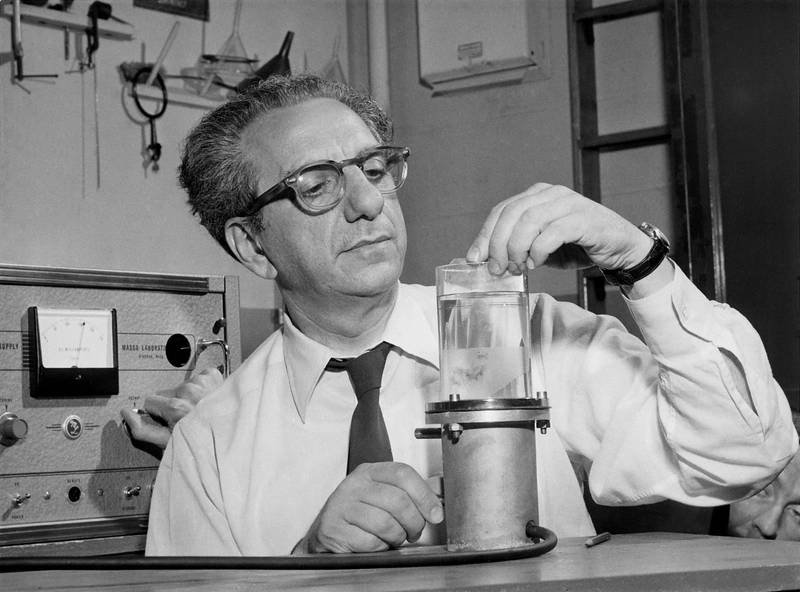 Frank Massa, The Father of Modern Electroacoustics, was the founder of Massa Products Corporation. His list of innovations and achievements is long; with his son Don and granddaughter Dawn carrying on the company’s mantra of engineering solution excellence, his legacy is longer. Photo courtesy Massa
Frank Massa, The Father of Modern Electroacoustics, was the founder of Massa Products Corporation. His list of innovations and achievements is long; with his son Don and granddaughter Dawn carrying on the company’s mantra of engineering solution excellence, his legacy is longer. Photo courtesy Massa
A Different Perspective
Following in the footsteps of any legacy leader is difficult, following “Frank Massa, ‘the Father of Modern Electroacoustics’ and her own technically accomplished father, Don, takes the challenge to the next level. At a young age, Stancavish became keenly aware that complex technology, albeit a major part, is still just one part of the equation, with the ability to clearly communicate that technology to both technical and non-technical audiences a distinct and important skill, too.
“My dad and my grandfather were very technical, but they both also understood how to communicate to people that aren’t technical,” said Stancavish. “I was able to pick up because they always brought me into the conversations, even at a young age. I learned from them how important is to be clear in your communication. So I learned a lot about how things work and how to explain something that’s a little more complicated to somebody who might not have that type of background.”
Clear communication with Stancavish starts in-house. “Everyone who’s employed here is a person to us; it’s not just a job, not just a title, not just a number,” she said. “We care a lot about making sure that everyone is feeling satisfaction from their job, and that they understand how important each job here is.” As a certified small, family business, that means everyone does lots of different things and everything that they do is important to the big picture.
While Stancavish is mindful of the company’s legacy leadership, she aims to bring her skillset to the fore in the manner in which she leads. “Communicating internally is something that was important to both my father and my grandfather, but I think I do it a little bit differently, I just have a different nature,” she said. “They were very technical leaders where I’m more of a holistic leader.”
“The other piece that is really important is that I’ve embraced fully the founder’s mentality,” said Stancavish. “Innovation is critical in this business. A lot of businesses that do sonar in the ocean don’t do the ultrasonics for air. And a lot of our competitors that do the ultrasonics in air don’t have the underwater experience, longevity or capability that we have. Embracing all of that and embracing the science of sound itself has been very important. A lot of people focus more on the electronic or the signal processing side; we focus on design and the construction of the transducers.”
Holistic is also an apt description for the way in which Massa helps to engineer solutions for its client’s needs, as it’s far more than simply developing technology for the sake of technology. “We also do the software and signal processing to different degrees and different applications. But understanding not just what the application is and what the desired results are, but to design the actual transducer to be able to achieve those results while minimizing the need for extra expensive or overly complicated electronics and software,” said Stancavish. “So we have a design system for new products – from transducers through electronics through software – designed to do what the customer really wants.”
This approach has helped Massa maintain its competitive technological edge while helping it expand its own footprint in industries and applications where electroacoustics is not traditionally applied. “I haven’t run into a lot of other companies that have focused on the electroacoustics and the science of sound to advance the products. And the fact that we design, engineer and manufacturer all in-house, we’re not focused just on the innovation itself, but also how to make it so it’s mass producible.”
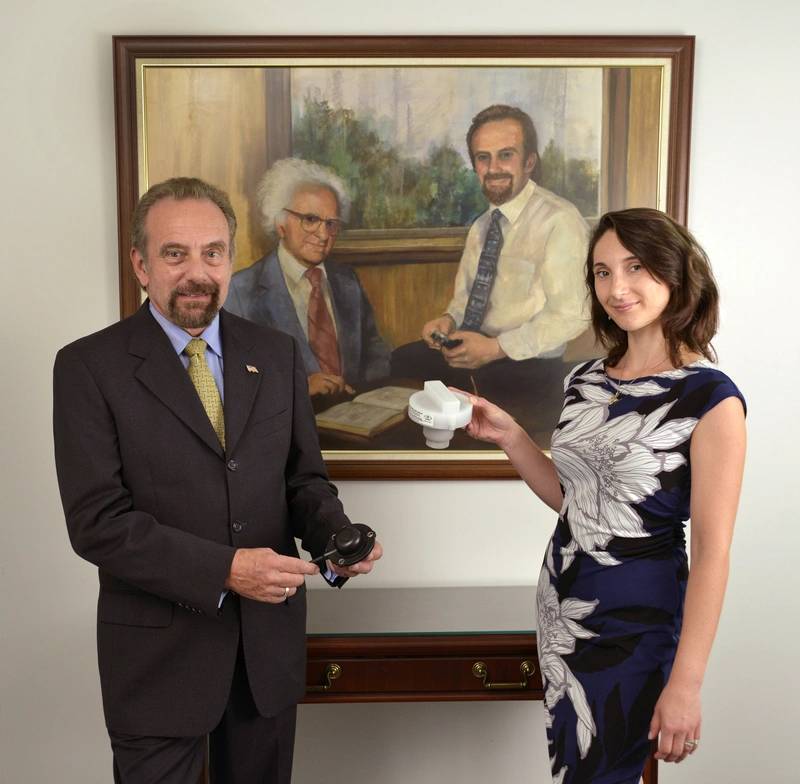 Frank’s son, Don Massa, and Don’s daughter, Dawn Massa Stancavish, have carried on and expanded the vision of the innovative founder. Today Massa employees design, develop, and manufacture new, and modified products. Hundreds of transducers and systems that operate in fluid and gas at different frequencies spanning from 5 Hz to 500 kHz have been designed and manufactured by Massa. Photo courtesy Massa
Frank’s son, Don Massa, and Don’s daughter, Dawn Massa Stancavish, have carried on and expanded the vision of the innovative founder. Today Massa employees design, develop, and manufacture new, and modified products. Hundreds of transducers and systems that operate in fluid and gas at different frequencies spanning from 5 Hz to 500 kHz have been designed and manufactured by Massa. Photo courtesy Massa
Women in Leadership
Taking over your family high-tech business without a formal technical education is one challenge, taking leadership of a technical business as a woman in a male-dominated industry another challenge altogether.
“I’ve enjoyed over the last few months meeting a lot of other women in leadership. What I’ve found is that for the pioneers, it’s merit-based, everyone has earned their place,” said Stancavish. “I hope that it continues along that path where women are considered, but they’re not given a job just because they’re women. It’s important that every job is considered based on qualifications, capability and merit.”
The path for Stancavish has had its fair share of ups and downs, too. “It’s been interesting going to different shows because I’m received in different ways. I’ve been in groups where I’ve been with male colleagues and sometimes people automatically start speaking to the men instead of to me. One particular interaction stood out. “When I introduced myself as being third-generation leader of this technical business, he said ‘Geez, you must be disappointed, you could have been a dress maker or something like that. I bet you’re really upset.” While this interaction left her in disbelief, she said it’s is more the exception than the rule.
“Most of all, I’ve found that (being a female leader) doesn’t stand in the way of something that’s important or worthwhile. There have been situations where I’ve been underestimated, but that’s also worked to my advantage. Most of the time it’s just been normal, and that’s the best. It’s exciting to be the third generation here in a technical field, being the granddaughter that took it over.”
 From designing the world’s largest transducer; to lobster-like surf crawling robots to detect and destroy mines; to creating a new bowling score system; to designing, building and delivering sonar systems used by the most powerful navy on the planet, Massa Products Corporation represents nearly eight decades of invention and innovation. Photo courtesy Massa
From designing the world’s largest transducer; to lobster-like surf crawling robots to detect and destroy mines; to creating a new bowling score system; to designing, building and delivering sonar systems used by the most powerful navy on the planet, Massa Products Corporation represents nearly eight decades of invention and innovation. Photo courtesy Massa
Technology Development: Cradle to Grave
Frank Massa (1906-1990), MIT Swope Fellow Graduate, began involvement in the sound industry since the early days of the Victrola, working for Victor Talking Machine, RCA Victor, and later Brush Development Company. He developed new designs and patents throughout his career. He worked on everything from the development of sound for motion pictures when silent films were being replaced by “talkies”, to the perfection of the hydrophone. Some of Frank Massa’s early designs even became iconic symbols, such as the ribbon microphone used for NBC.
The legacy of Frank Massa’s innovative spirit lives on in his namesake company today, as the company serves commercial and government clientele with a family of off-the-shelf products to original engineered solutions.
“(My grandfather) trained all of his people with the idea of design through production,” said Stancavish, with an eye always on designing, manufacturing and delivering a solution that is high-quality yet affordable. “Being that we’re one facility, we have a strong engineering department. We have production engineers that work with the design engineers and a full-blown production line too, with quality control in-house.”
So everything from design through products is monitored, ensuring the kinks are worked out at the prototype level, with an eye on making it both affordable and high-quality for mass production.
Working in such a proprietary field, with clients like the U.S. Navy, it’s understandable that many current and future – and in some case past – technical innovations are kept under tight wraps
With more than 165 U.S. patents under its belt and more on the way, Massa is currently engaged in a number of projects and product development, both for itself and in partnership with outside organizations with the aim of delivering co-branded products.
Some of the product developments over the years have not been so secretive, and Stancavish remembers with a laugh one solution – a bowling score system developed in the late 1970s – that highlight Massa’s out-of-the-box thinking in finding applications for its core competencies outside of the markets it normally serves.
“We’ve done everything over our history from innovations for the military to the bowling scoring systems for AMF,” she said, noting that before the latter invention, the bowling leagues had to have a pin counter, an actual person who would count the pins tabulate the score. Massa came to the table with an air ultrasonics solution that spots the pins, counts them and gives the score automatically, which helped to speed up the rate of play and the ability to service more leagues in a shorter period.
“It was kind of funny, because I was a little girl when that was happening. I came in and I saw all the engineers bowling, because we made a small half lane and they were testing it,” remembers Stancavish. “And I said ‘I thought you were working Dad. Can I have my birthday party here?’”
But the experience left an indelible mark on the company’s future leader. “The bowling scoring thing wasn’t something that we went out and said, ‘let’s use our technology to score bowling.’ They came to us with a problem and we were able to say, ‘Let’s see what we can do to solve that problem,’” said Stancavish.
What she also learned, in retrospect, was the importance of enjoying your work. “I learned that this is a fun place to work. You can create amazing solutions and new products that make people happy, and you can have fun doing it.”
With a solid history and present, Stancavish now has her eyes trained on the future of her family’s company and the unique solutions it delivers. While unable to give explicit details of what’s in the works, she said “What I can say is that we’re pushing the boundaries of what’s possible with our technology. We’re creating some new designs for use in water, for use in air and in new applications where our technology isn’t currently seen. So over the next 10 to 20 years, it’s my goal to continue to grow the markets where our technology is possible and considered. Because right now there are a few known spaces that everybody is in, but we’ve been learning about some other spaces” where Massa can introduce or further expand its solutions.
 Massa Employees
Massa Employees
“I learned that this is a fun place to work. You can create amazing solutions and new products that make people happy, and you can have fun doing it,” said Dawn Massa Stancavish. Photo courtesy Massa
Part of the future is looking to the past; past innovations, some dating as much as 50 years ago, that were perhaps innovations before their time.
“To be able to go back and revisit some of the older things that we started – but that might not have gone all the way through production – we’ve been finding that some of those things are applicable today.”
While she found it nearly impossible to select her favorite Massa innovation of all time, she noted two – both military products – that were featured nationally in TIME magazine.
The first was the design and manufacture of the world’s largest transducer in the 1960s for the Mission Capistrano, Project Artemis. This was interesting because – despite not winning the contract to supply the transducer – Massa made the investment of time and resources to develop a prototype … just in case. As luck may have it the winning bidder’s system failed to deliver according to Stancavish, so the Navy turned to Massa.
“That is such an important story for our business, even though it happened a long time ago, because that’s what we still do today,” said Stancavish. “If there is a need to do something well, to do it right, to apply our technology in a way that others might not be able to, we will do it if there’s enough of a need. If we’re sure of what the application is and what the solution is, we’ll do it on our own to prove it and then negotiate.”
The second feature in TIME – named one of the “Best Inventions of 2003” – was for Massa’s Robo-Lobster (Invented by Don Massa and Joseph Ayers), a 7-lb., 2-ft.-long crustacean -like robot made of industrial-strength plastic, tasked with detecting and destroying mines buried in the surf zone. The prototype mimicked real lobster movements to negotiate all types of coastal terrain. The plastic antennas sensed obstacles; the eight legs propelled it in any direction; the two claws and tail kept it stable in turbulent water.
“It’s the same philosophies as with the Artemis story, and with the lobster story, and with the bowling alley story: we listen and understand the problem, we determine if there’s enough of a business case for us to go for it, and then we can usually find a solution that’s more affordable to our customer.”
Watch the full MTR TV interview with Dawn Massa Stancavish here:










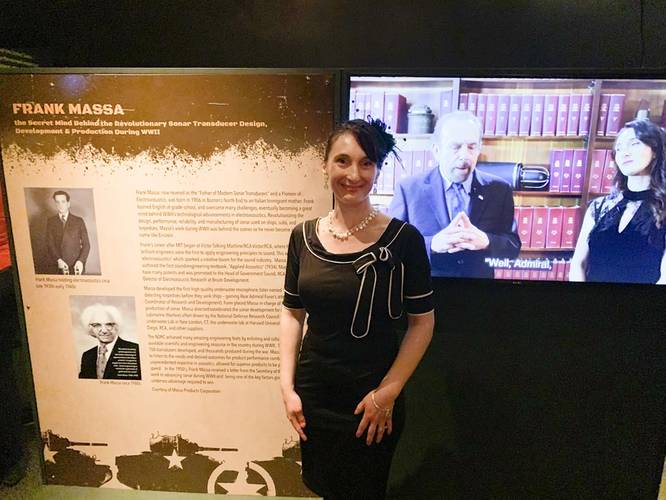
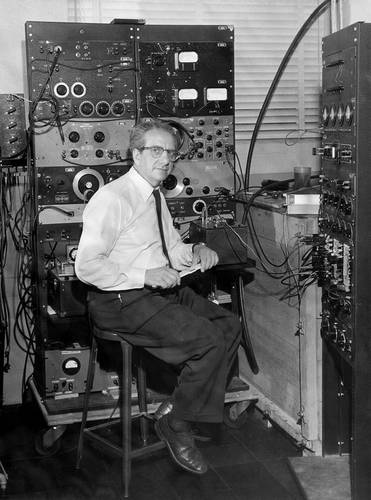

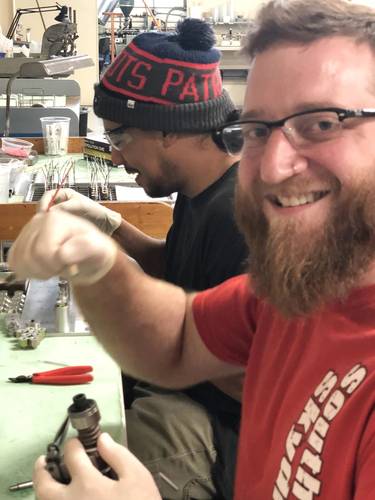
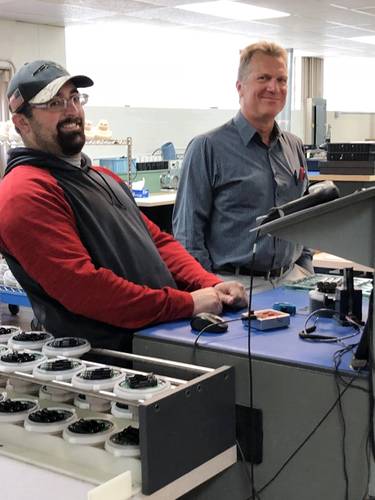
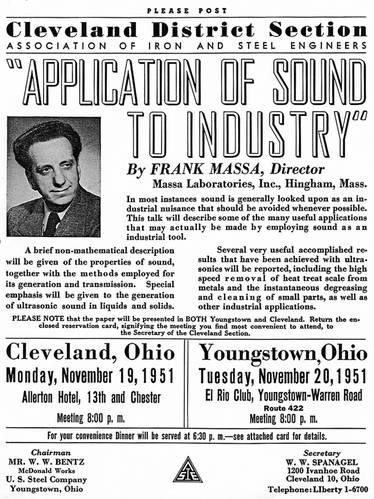
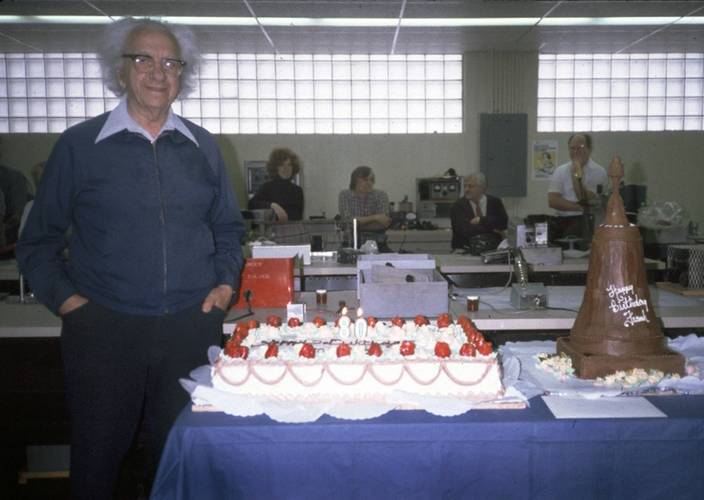






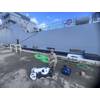





 December 2025
December 2025



